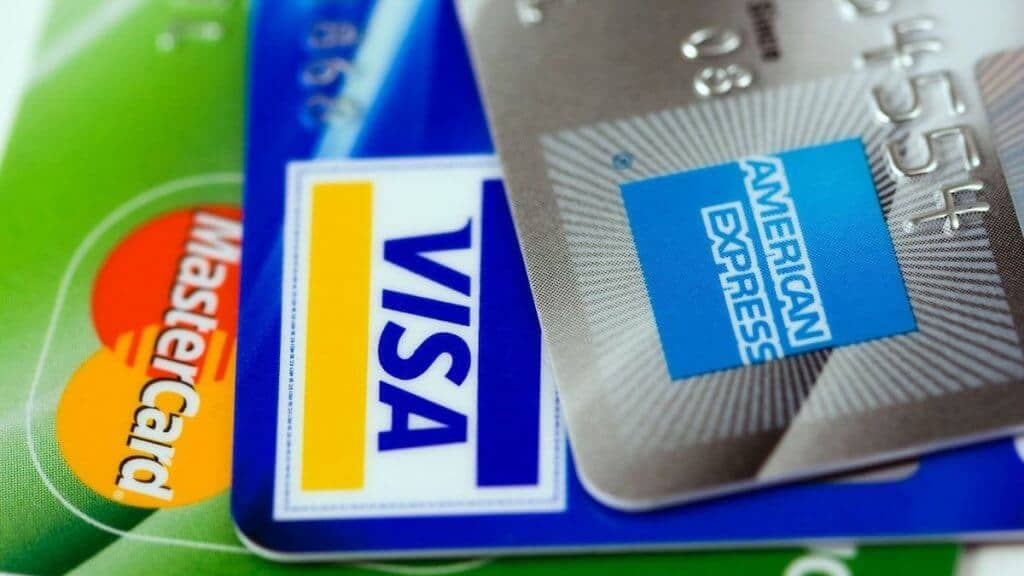Are you looking to become financially free in 2024? Who wouldn’t? This article covers the steps you can take to reach financial freedom.
Achieving financial freedom is many peoples’ goal. Everyone wants to live the American dream with enough savings (i.e. emergency fund), investments, and cash on hand to afford the lifestyle they want to have.
Unfortunately, achieving these goals isn’t a walk in the park, especially with increasing debt, financial emergencies, and other issues that are keeping people from achieving their financial freedom.
But it gets better.
Now, you might be wondering what financial independence is, and if it’s the same as financial freedom. Indeed, they are often used interchangeably.
So, grab a cup of coffee and read on to set yourself on the right financial path.
What is financial freedom?
The difference between financial freedom and financial independence is that financial independence allows you to live your current lifestyle without having to work. Financial freedom is one step above financial independence, in that it allows you to live the life you want.
The reality is that people spend most of their lives looking for financial freedom. But how do you know when you’re financially free?
Finances don’t give you sleepless nights

Financially stable people don’t lose sleep over finances. When they go to sleep, they sleep like small kids and live peacefully. What keeps them awake at night isn’t related to finances.
Credit cards are for convenience and rewards only
Financially stable people use credit cards not because they have run out of money, but for convenience and reward purposes only.
Many people who haven’t achieved financial freedom use credit cards to extend their paychecks. In other words, they buy things their income can’t afford.
No need to worry about a potential job loss
Financially stable people don’t worry about losing their jobs. A recent study suggests that nearly 40% of the people in the US with incomes >$100k live from paycheck to paycheck. For these people, losing a job could bring financial disaster to their lives. And, an emergency fund (in a savings account) can bridge the gap between jobs.
When you’re financially stable, the thought of losing a job doesn’t worry you.
18 Steps to reach financial freedom
Even though reaching financial freedom isn’t an easy endeavor, there is a realistic approach that can help you manage your finances responsibly to achieve it.
Generally, all that is needed to achieve financial freedom is to cultivate good financial habits. And the steps to financial freedom harness these habits.
Read on to learn the steps to practice daily to reach financial freedom:
Financial freedom step 1: Set specific life goals
Goal-setting is an important step to financial freedom and applies in all aspects of life. When it comes to achieving financial stability, there is no room for being vague in what you want to achieve.
People looking to reach financial freedom must set specific monetary goals. When you set specific goals, you attract specific actions or solutions to achieve them. Therefore, keep your financial goals specific and measurable as well as realistic, timely, and achievable.
To achieve this, determine how much money your bank account should hold at any given time, evaluate your lifestyle, and decide at what age you want to achieve financial freedom.
Financial freedom step 2: Determine your current financial standing
No matter the stage of life you are in, whether you’re a student struggling with student loan debt, planning to retire, or pursuing other interests in life if you want to achieve financial freedom, start by determining where you stand financially.
One needs to do an honest assessment of their personal financial situation first to establish where they are and what they need to do to reach where they want to be in the next couple of years.
Put all your debts together, determine your expected income, and examine what’s eating your finances without your knowledge.
You could also seek help from a professional financial advisor as well. In fact, when working to reach financial freedom, it’s important to have a financial advisor.
Read more: 16 Practical Money Skills to Master Before Retirement
Financial freedom step 3: Live within your means
The path to financial freedom isn’t rosy. People looking to achieve financial freedom have to commit to living within their means. In this case, you need to prioritize building a strong financial foundation of savings before you start an investment portfolio.
One thing that keeps people from achieving financial freedom is their beliefs about money.
What’s your relationship with money? Do you believe that you and money can’t stay in the same house for a given period?
Instead of assuming financial stability isn’t for you, recognize that you can also move from living paycheck to paycheck to a financially stable lifestyle.
But to reach that point, you must ensure your current resources can cater to your current lifestyle and then minimize expenses.
When you start keeping your daily expenses lower than your income, you create room for saving for your future life.
Financial freedom step 4: Know the difference between needs and wants
Understand what you need and what you want. There is a very big difference; not everything you spend money on is essential.
Note that needs and wants differ from one person to another. For instance, one’s needs might be another person’s wants. However, you must draw the line between the two if you’re working to reach financial freedom.
Understanding the difference between the two can help you prioritize your expenditure and avoid spending money on unnecessary things.
Pick up a pen and paper and write down your daily expenses. Tick off items you can’t live without and leave out those you don’t need.
Financial freedom step 5: Have a budget
Developing a budget is one of the top steps to reach financial freedom for financially stable people. They always have a daily, weekly, and monthly budget that helps them pay all their bills on time while keeping their savings on track.
Even though a budget can be restrictive, it’s a must-have tool for helping you to reach financial stability.
Knowing where your money comes from and where you spend it goes a long way to helping you avoid unnecessary expenditure.
Read more: Grocery Shopping On a Budget – Start Saving Now!
Financial freedom step 6: Know how much you spend
Achieving financial freedom starts by understanding how much money you spend and for what purposes. Sometimes you spend money on unnecessary things. If you live paycheck to paycheck, saving your money for your future life can be difficult.
Tracking your spending can help you determine exactly how much you can save at any given time.
Track your spending for one or two months to find out where your money goes. Remember to track both hidden and visible expenses to ensure you’re 100% clear on how you’re spending your money.
Financial freedom step 7: Trim your budget
Once you have developed your budget and understand how much you spend per day, week, or month, trim it as much as you can.
After going through your budget carefully, you will realize that there are many more things to leave out than you can imagine.
You’re probably asking yourself, “should I leave out my morning latte or remove my gym membership from my budget?”
Here, people need to check beyond the small things and examine the whole budget to make important lifestyle adjustments to alter their current financial state. And don’t forget the importance of an emergency fund! It’s the answer to any unexpected expenses.
Read more: 21 Ways to Save For Retirement if you Think Social Security Will Fail
Financial freedom step 8: Keep track of your credit score
Many people out there can’t access loans due to their bad credit scores. Note that your credit score can determine whether you will get loans as well as the interest rate you will be offered.
Your credit score can also affect your car insurance, life insurance premiums, and more.
In some regions, employers check candidates’ credit scores before making hiring decisions.
Keep your credit score in check by settling your bills on time and minimizing debts.
Financial freedom step 9: Use debit cards instead of credit cards

Credit cards = borrowed money.
Debit cards = earned money.
To put this into perspective, when you shop with a credit card, you use borrowed money (money that you’ll repay based on the terms and conditions of the credit company). On the other hand, when you buy items using a debit card, you spend money you’ve worked for (earned money).
In the first scenario, you’re likely making debt payments, and increasing debt. Thus, it’s recommended to use a debit card instead of a credit card when buying items.
Financial freedom step 10: Learn how to negotiate
Many people are afraid to negotiate when buying goods or services, thinking that they may appear too cheap. This is perhaps one of the cultural beliefs among Americans that you have to overcome if you want to reach financial freedom.
Understandably, some businesses won’t be open for negotiation. However, small businesses tend to allow negotiation, especially with their repeat customers or when buying items in bulk.
This is how to buy goods or services at a discount.
Financial freedom step 11: Learn to invest your money
Once you have developed a reasonable budget, don’t spend the extra money from your bank account on unnecessary expenses. Invest it. Some people would just deposit the extra money into their bank accounts. An emergency fund (in a savings account) is fine, but, often 3-6 months of needs expenses is enough. After that, consider asking your financial advisor about investing your money in a portfolio of quality dividend stocks and start earning some serious returns.
Read more: How To Invest In Dividend Stocks For Income
Financial freedom step 12: Passive income with real estate
Passive income enables you to earn money while you sleep. Real estate is a $10.5 plus trillion industry. Investors are earning billions in passive income through real estate. Granted, there are other passive income ideas out there to earn more money, such as investing in dividend stocks. However, some folks find real estate easier to invest in.
You don’t have to be a professional to invest in real estate. You can also start small and expand your investment portfolio with real estate slowly as you start earning money.
Read more: 15 Ways to Generate Passive Income from Real Estate
Financial freedom step 13: Minimize eating out
While working the steps to reach financial freedom, it’s easier to forget that even your meals can keep you from achieving your goals. To avoid this, you should start packing lunch to avoid eating out every day, especially when working far from home.
Apart from helping you save, packing lunch also enables you to prepare tasty and healthy meals.
In fact, multiple studies have linked eating out in restaurants with risks of obesity.
Financial freedom step 14: Pay your bills on time
Of all the steps to financial freedom, this one is key. I can’ stress enough about the importance to pay your bills before they are due. While paying bills can seem like stretching your paycheck, not doing it is even worse. If you don’t pay your bills on time, you’ll be tempted to use the money on other things – however, it’s a little like kicking the can. The problem never goes away.
You can avoid this by paying your bills on time or before they are due. This will give you more control over your finances and enable you to adopt good financial habits that can help you reach financial freedom.
Financial freedom step 15: Minimize time spent in front of the TV
How much time do you dedicate to TV? You might be wondering how watching TV can keep you from achieving financial freedom, right?
Well TV is an advertising platform where people run all kinds of convincing ads that could tempt you to buy. In fact, watching TV could lead to impulse buying because the more you watch TV shows, the more you will see ads that will make you want to buy what’s being advertised.
Instead of watching TV, spend time reading books about money and investing.
Financial freedom step 16: Keep your checkbook balanced at all times
Online banking has made many people forget about keeping their physical checkbooks balanced. This is because, with online banking, your balance is right at your fingertips. This makes it easy to underestimate your balance.
Balance your checkbook so you know how much cash you actually have and how much you regularly spend.
Financial freedom step 17: Say no to impulse buying
Impulse buying is another reason that’s keeping people from attaining financial stability. It’s a bad financial habit that you must avoid at all costs by learning to say NO to yourself.
Think about it. You’ve gone out shopping, picked what you wanted, but before you head to the counter, you see some more items. Even though they aren’t necessary, you add them to your cart because they don’t cost that much.
This is impulse buying and thanks to online shopping, millions are guilty of it! The idea that items will be delivered to the doorstep of the customer makes people end up buying on impulse.
Financial freedom step 18: Have a retirement savings plan
The last financial freedom tip (but not least) is to have a retirement saving plan. If you don’t have a retirement savings plan such as an IRA or 401(k), you’re going to struggle to reach financial freedom. The good news is that there are a couple of financial savings plans out there. You don’t necessarily need to have an employer to start a retirement savings plan.
Starting a retirement savings plan will enable you to contribute a little bit every month and before you know it, you’ll be surprised how much more money you’ve accumulated to help you live a stress-free and peaceful life.
Related read: Can You Retire at 62 With 300k
Final Thoughts
So there you have it: 18 steps you can practice to achieve financial freedom. Remember that any one of these steps alone won’t make your money problems go away. However, they will help to guide you to develop good habits that can position you on the path to financial freedom.
Good luck!

